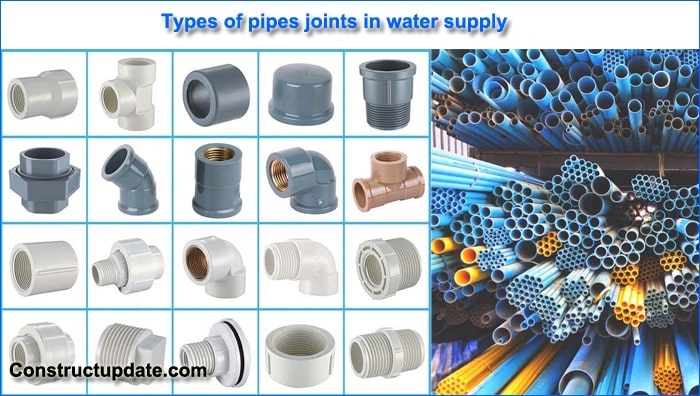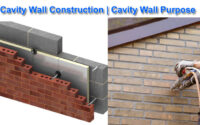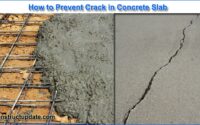Types of Pipe Joints in Plumbing | Various pipe joint types
Major plumbing system components that connect several pipes together are pipe joints in the water supply. There are many different types of pipe joints, however, the choice of one depends on factors like pipe size, material, flow pressure, and others. Each pipe’s pressure should be able to resist the pipe joint.
Types of Pipe Joints in Plumbing
The following list includes various pipe joint types used in plumbing systems.
- Threaded joint
- Brazed joint
- Soldered joint
- Welded joint (butt welded, socket welded)
- Flanged joint
- Compression joint
- Grooved joint

Threaded joint
A threaded joint is one in which the pipes are screwed together using threads that are built into each pipe. One pipe has threads on the inside, while the other has threads on the outside. Threads are provided for cast iron, copper, PVC, and G.I. pipes.
From 6mm diameter to 300mm diameter pipes, threaded joints are available. For low temperature and low-pressure flows, they are preferred. The joints may expand and leak in hotter places as a result of thermal expansion. Threaded joints are simple to install, but they need to be well-maintained.
Brazing joints
Using molten filler material that is heated above 840 c, brazing is the technique of connecting two openings. Copper or copper alloy pipes are typically joined using brazing. Parent metal should have a greater melting point than filler metal. In comparison to other joints, the brazed joint has a lesser mechanical strength. These joints are typically seen in areas with a moderate temperature range.
Soldered joint
Brazing and soldering are related processes. With the use of soldering, copper alloy pipes are linked while the filler material melts at 480 degrees. Copper and copper alloys are also joined using soldering. This kind of joint is most effective in cold climates.
Welded joint (butt welded, socket welded)
When two pipes have the same diameter, they must be joined using butt welding. The most popular kind of welding is this one. To add joints to pipes when employing butt welded joints, specialized labour is required. These kinds of couplings have been employed in large commercial and industrial pipe networks.
The joints are fixed; they cannot be opened for maintenance. The piping system will look fine if the exterior of the welded components is smoothed.
Flanged Joint in Pipe
For big diameter pipes and high-pressure flows, flanged joints are used. They are typically utilised with threaded or plain end pipes. At the pipe junction, two flange parts are joined by bolts to stop leaks.
These are often composed of cast iron, steel, etc., and have good strength and resistance to high pressure. The fastening of bolts should be done properly while installing as high temperatures can cause them to fail under creep and lose their grip. They are also helpful for maintaining and repairing pipes.
Compression Joint in Pipe
Compression joints are used to unite pipes that have plain ends when fittings are installed at the ends of the pipes. The pipe ends will be linked together by threaded couplings or fittings.
Therefore, in this scenario, pipes of various materials and sizes can be connected. However, the joints must be correctly sized to withstand flow pressure; otherwise, they could malfunction and leak.
Compression fittings come in a variety of materials, and the choice of fittings may rely on our needs.
Grooved joint
Groove joints are used to join two pipes together by creating grooves at the pipe’s end with the use of a socket. Bolts are used to assemble these grooved couplings. These couplings are inexpensive and simple to install.




